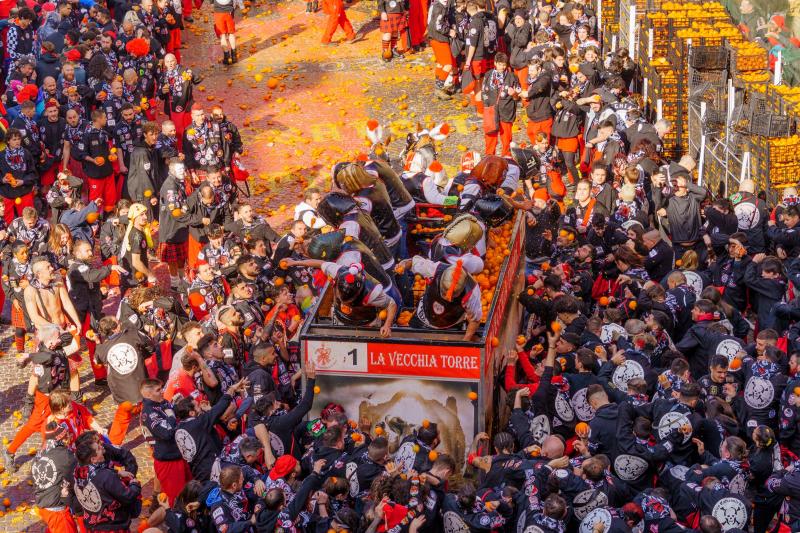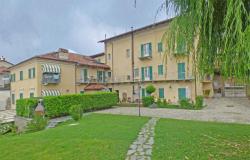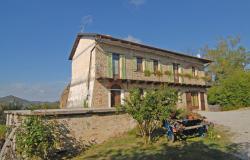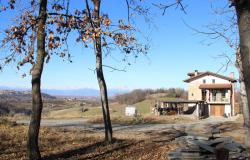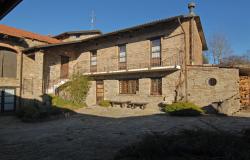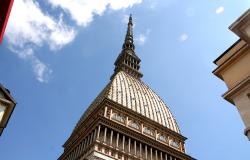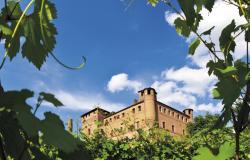February is festival month in Italy, with Carnival celebrations from Venice to Bari with costumes, parades, confetti and bountiful food and wine. But in a small town 45 minutes north of Turin, all those elements combine with a strange, citrusy twist — oranges.
Walking through the medieval center of 25,000-resident Ivrea any other month of the year, with its empty cobblestoned streets, a few boutiques, and a museum charting the town's Roman history, it’s hard to imagine its main piazza filled with mayhem.
For three days each February, spectators and competitors flock in the thousands to Ivrea for a peculiar reenactment of a historical event. Its Orange Festival turns Ivrea into a raucous battleground with neighborhood teams competing for victory.
The festival’s origins are in the 12th century, and its current iteration is from the 19th — organizers say it’s one of the oldest Carnival festivals in Italy. Teams barrel across those cobblestoned streets in horse-drawn carts, and their on-the-ground rivals pelt them with oranges. If you’re brave enough to sit on the sidelines during the three main event days, Shrove Sunday to Tuesday (which fall on February 11 to 13 this year), you’ll want this guide to the origins, what to expect, and the safest way to experience all the juicy madness.
Why oranges?
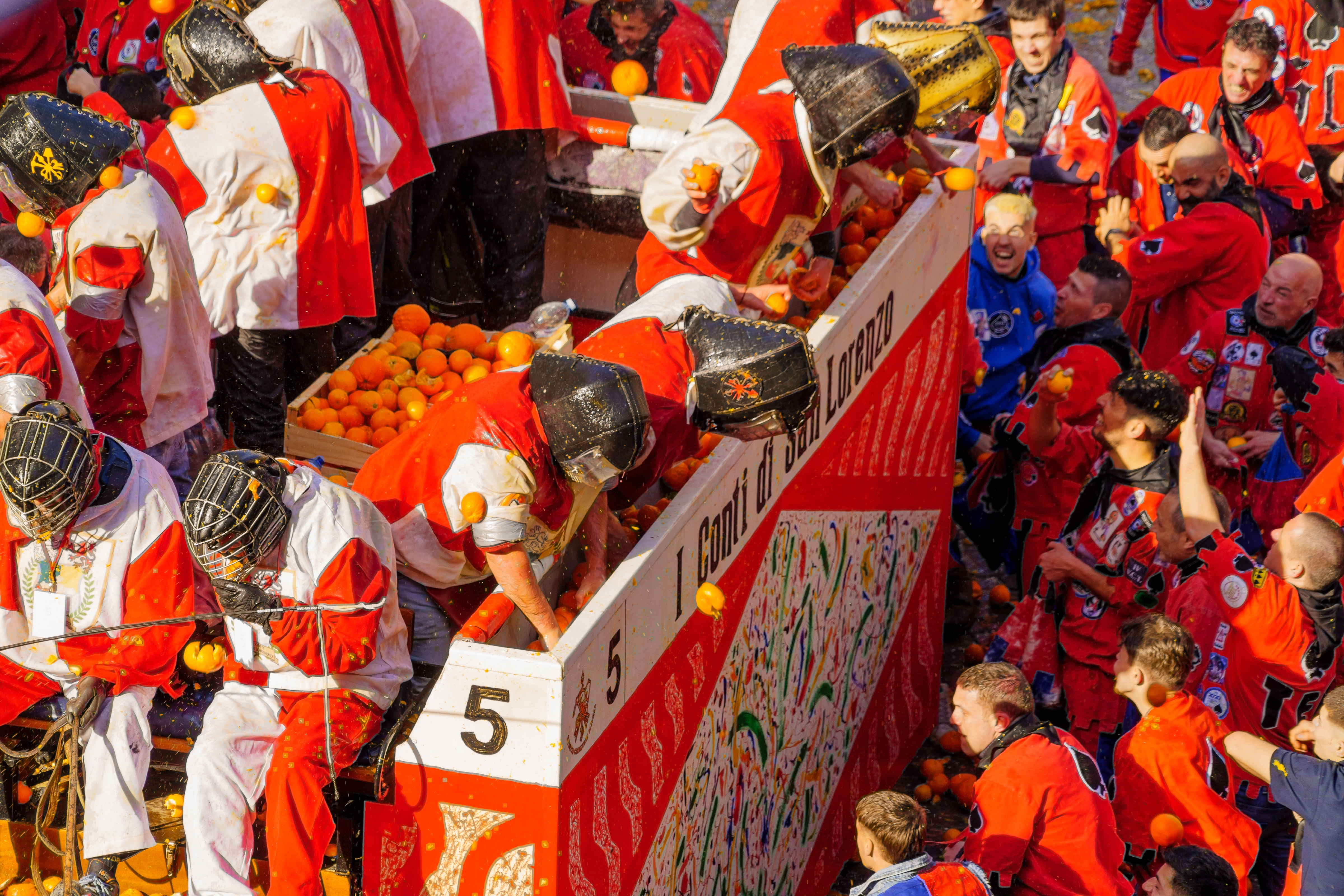
The historical significance of the Orange Festival is complicated. Popular accounts state that the battle commemorates a revolt against the city’s tyrant, who is said to have attacked a miller’s daughter, Violetta, on her wedding night. Violetta is said to have fought against the tyrant, decapitated him and then held up his head for all to see while the city responded by storming and burning down his palace. The Orange Festival is the evolution of celebrating that victory, with participants in costume to add to the Middle Ages element. With Italy’s recent national foment around the elimination of violence against women and gender minorities in Italy, the role of gender in the festival may feel even more pointed at this year’s edition.
Following tradition, a local woman is chosen each year to represent Violetta, with her identity hidden leading up to the battle. Violetta, called Vezzosa Mugnaia, or Charming Miller, travels through Ivrea during the festival in a gold horse-drawn chariot, wearing a white dress, red cap, and green sash. As she passes by the crowds, she’s cheered on and throws candy to spectators. Teams in horse-drawn carts represent the tyrant and his supporters, and teams on the ground are “commoners” who throw oranges at the carts; all teams include men and women of all ages. For novices and experts alike, the weight of the oranges and the sting of juice combine to create a painful weapon, and people come away with bloody noses, black eyes, cuts and bruises. It’s said that until the 19th century, beans were used instead of oranges as a form of revolt against feudal lords. Oranges supposedly are when the battle morphed from a local tradition of young people throwing oranges from their windows to confirm romantic interest.
Like its muddled history, the festival is complex; “teaser” events and minor festivities run throughout January in the lead up to the culmination — this year the battle will be held on February 11 — which includes feasts, parades and bonfires. At the end of the festival, judges select a winning team of orange throwers based on fair play, decorating efforts in their neighborhoods, and attitude (although the scoring system is secret).
Where to watch
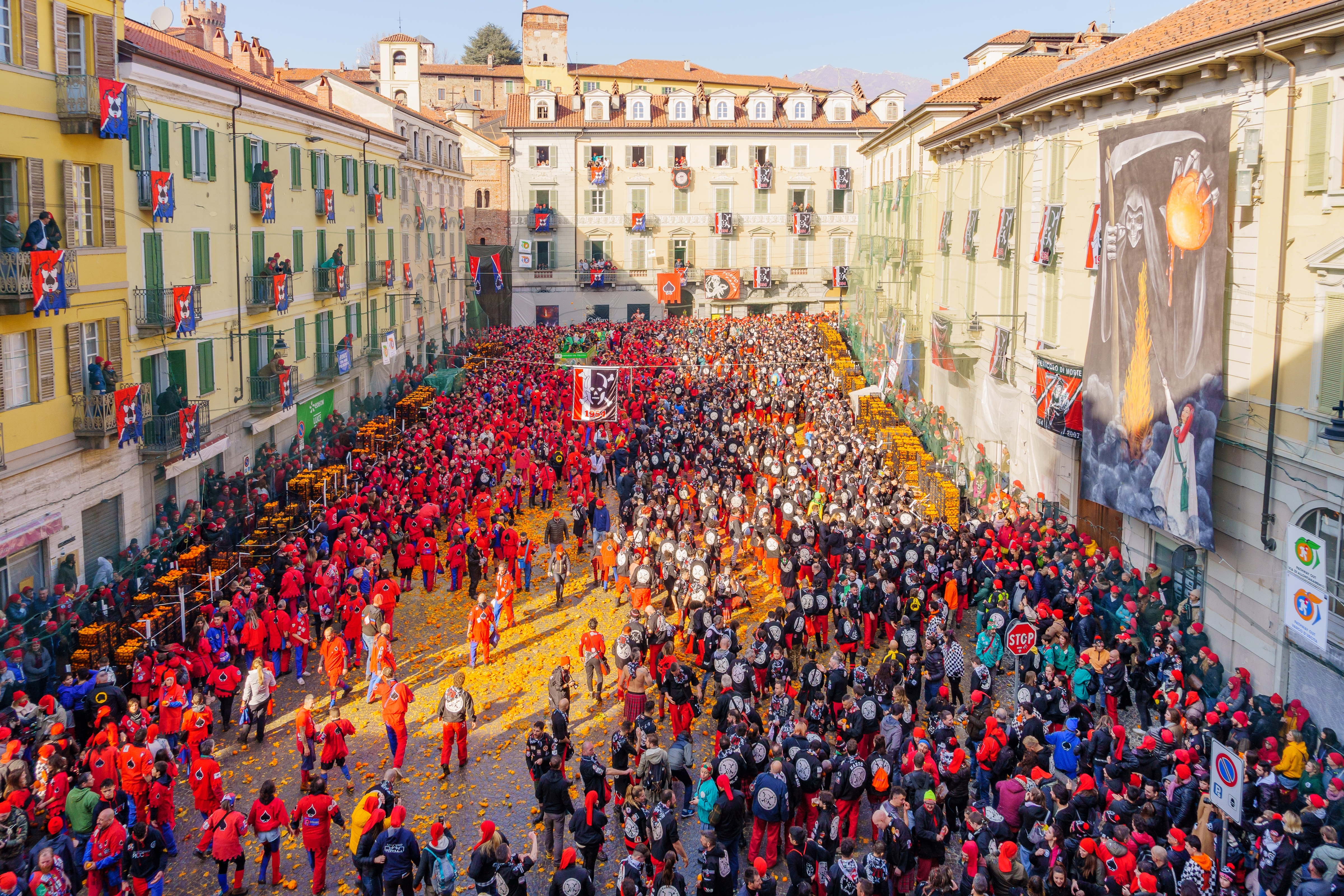
Orange Festival spectators must wear a red Phrygian cap, indicating that they’re not competing. The safest place to watch is from behind nets draped throughout the city, as getting near the action can put anyone at risk of the orange crossfire. Encircling about 1.2 miles (2 km) of the historical center, nine competing teams (about 4,000 people) register weeks in advance to be aranceri (orange throwers). The teams are cultural associations with distinct personalities and headquarters throughout the city, and some host gatherings throughout the year. Each of the nine teams also has a set location where you can see the action as the teams take off:
Piazza di Città: Asso di Picche (Ace of Spades) was created in 1947, making it the oldest of the current teams. They wear red and blue jerseys with a spade and a black scarf. Also in Piazza di Città (Ivrea’s main square), you’ll find 2023’s champion, Morte (Death), in a black jersey with a white skull and red pants.
Piazza Ottinetti: Taking off from Piazza Ottinetti will be Scacchi (Chess), with a black and white checkered jersey with an orange Rook as their symbol. Scorpioni di Arduino (Arduino’s Scorpions) wears a yellow jersey with a black scorpion and green pants and will take off from here, too.
Dora Baltea River’s Right Bank: The only team set by the side of the river which divides the town with its Ponte Vecchio (Old Bridge), Tuchini del Borghetto (United from the Village) has a green jersey with a black crow. This well-organized team has a robust website for sign-ups and even has an option for kids under 14 to participate.
Piazza del Rondolino: To the east of the historical center, you’ll find Pantera Nera (Black Panthers) in black and yellow, I Diavoli (Devils) in yellow and red, and Mercenari (Mercenaries) in maroon and yellow.
Piazza Freguglia: Next to Piazza del Rondolino is Piazza Freguglia, where Credendari (Believers) take off wearing a blue jersey and yellow pants; their symbol is Ivrea’s coat of arms.
What to eat
Aranceri need to stay fueled up, and that’s where the festival’s traditional foods come in.
On the Sunday before the battle begins, a hearty dish of Faseuj grass (beans and pork rind), which is said to date back to the Middle Ages, is cooked in copper pots and distributed at Fagiolate (Bean Feasts). Piazza Maretta, near the Ponte Vecchio, has the longest-running Fagiolate.
To conclude the festival, Polenta e Merluss (polenta and salt cod) is served on Ash Wednesday. The dish is made with dried salt cod and an onion sauce and served over a steaming plate of polenta at Piazza Lamarmora.
Aside from the feasts, the festival’s aftermath means days of cleaning to clear up the orange muck that’s clogged the usually empty streets. It can take weeks for the orange peel, pulp and juice to wash away, returning Ivrea to a small, quiet town.
If you go
Check out the official website for full program details.
